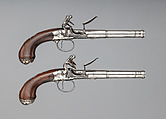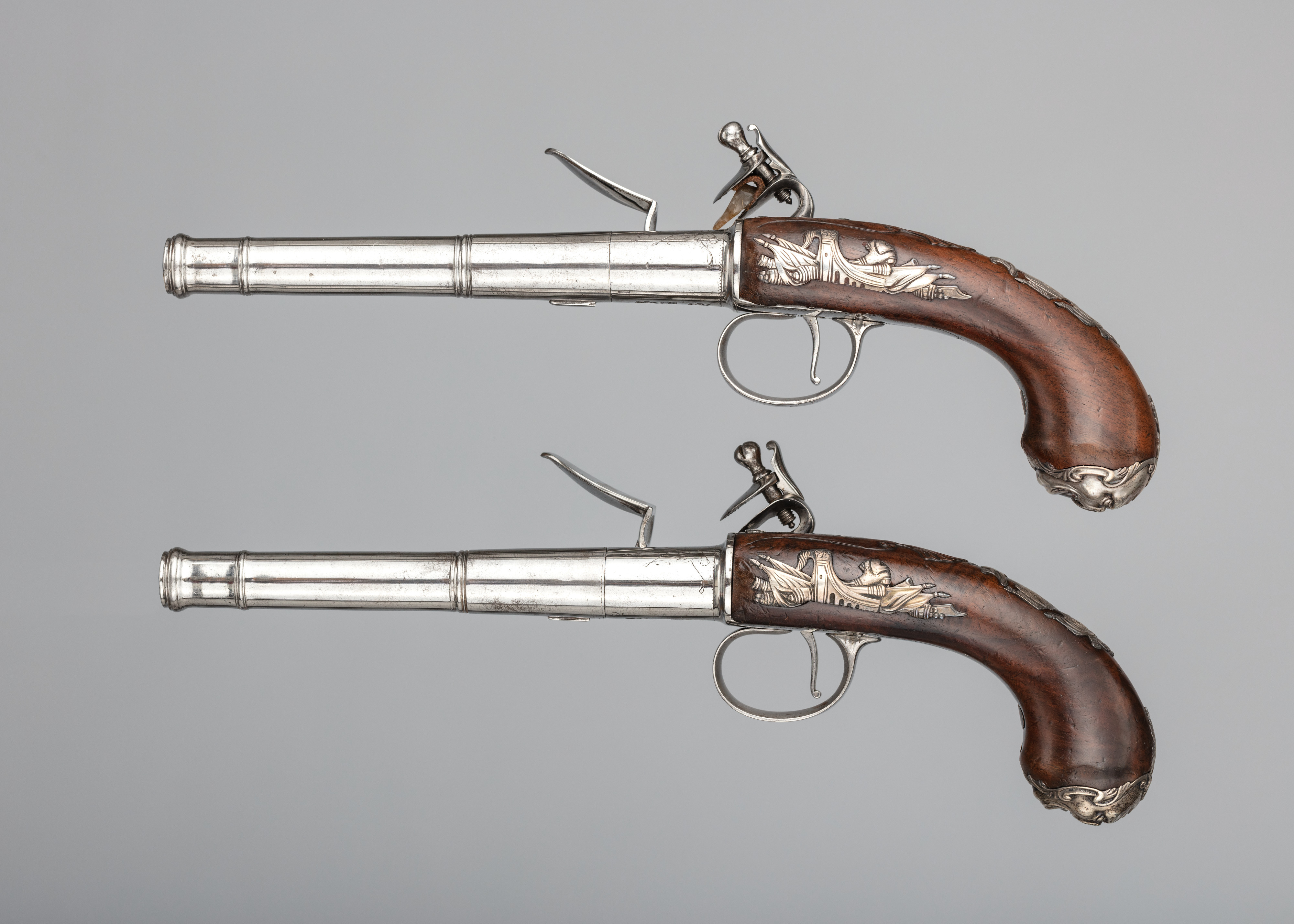Pair of Flintlock Turn-Off Pistols
Gunsmith Daniel Moore British
Possibly John King
Not on view
Turn-off pistols first appeared around the 1640s and gained particular popularity in England in the 18th century. The barrels of turn-off pistols unscrew ahead of the chamber, allowing for the ball to be set directly into place, rather than loaded through the muzzle. A ball loaded via the turn-off system could be slightly larger than a muzzle-loaded ball as it was not necessary to make it a size that would pass easily through the barrel during loading. It could fit in the bore more tightly, and thus achieve increased velocity and accuracy when fired. This pair of pistols exhibits many of the typical formal features of English turn-off pistols of the early to mid- 18th century, including: a smoothbore barrel resembling a cannon in appearance; a lock forged together with the breech, with the lock plate thus forming an extension of the barrel; a decorative side-plate that served no practical function, the lock being secured to the breech; a short, swollen butt; a silver mask butt cap; and a silver escutcheon on the grip. Pistols of this type are often referred to as Queen Anne pistols, despite the fact that most were produced after the Queen’s death (1665–1714).
Due to rights restrictions, this image cannot be enlarged, viewed at full screen, or downloaded.
This artwork is meant to be viewed from right to left. Scroll left to view more.





